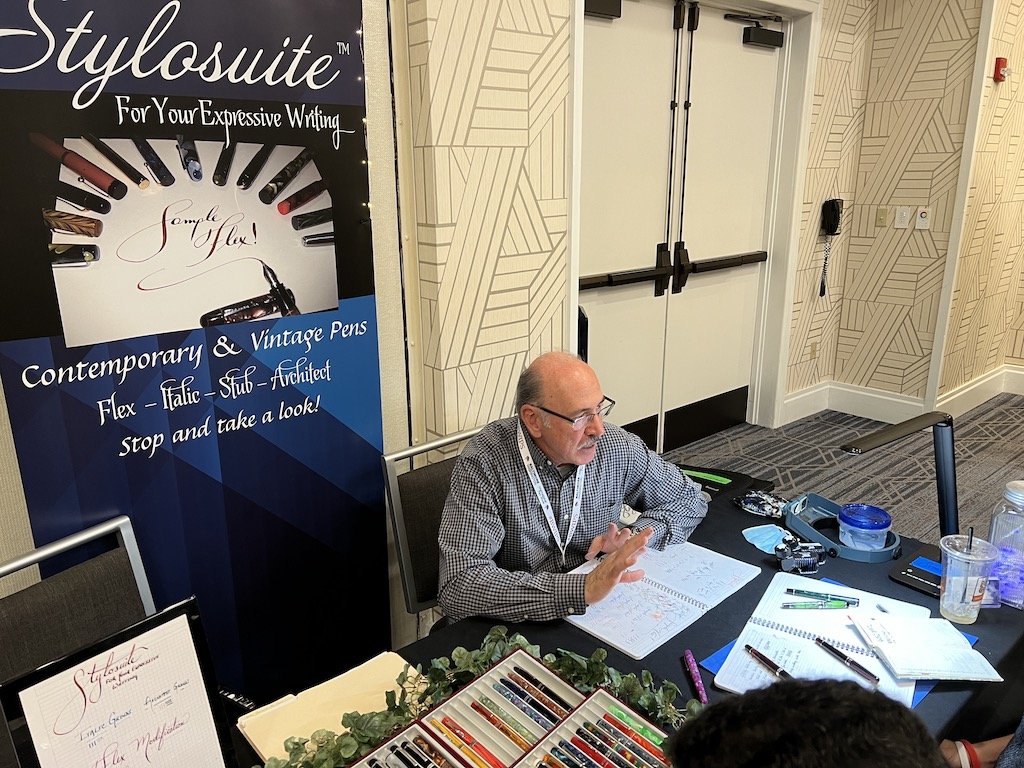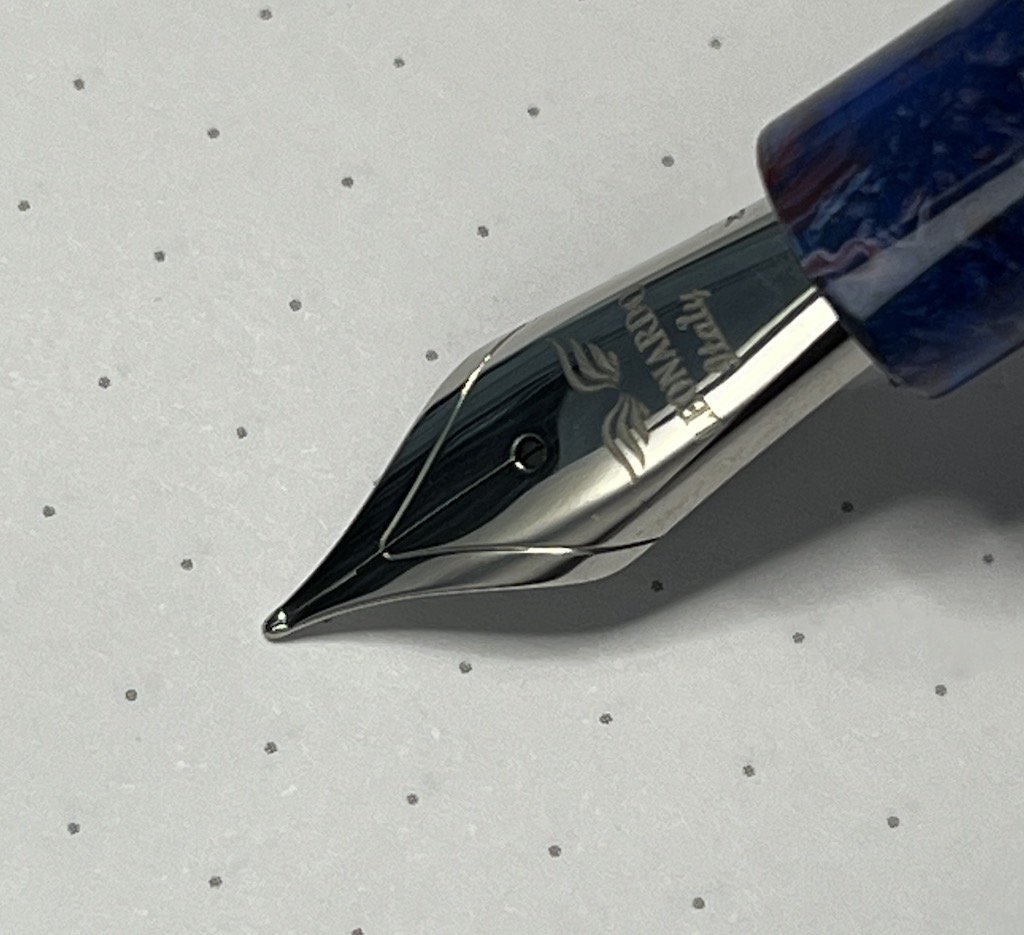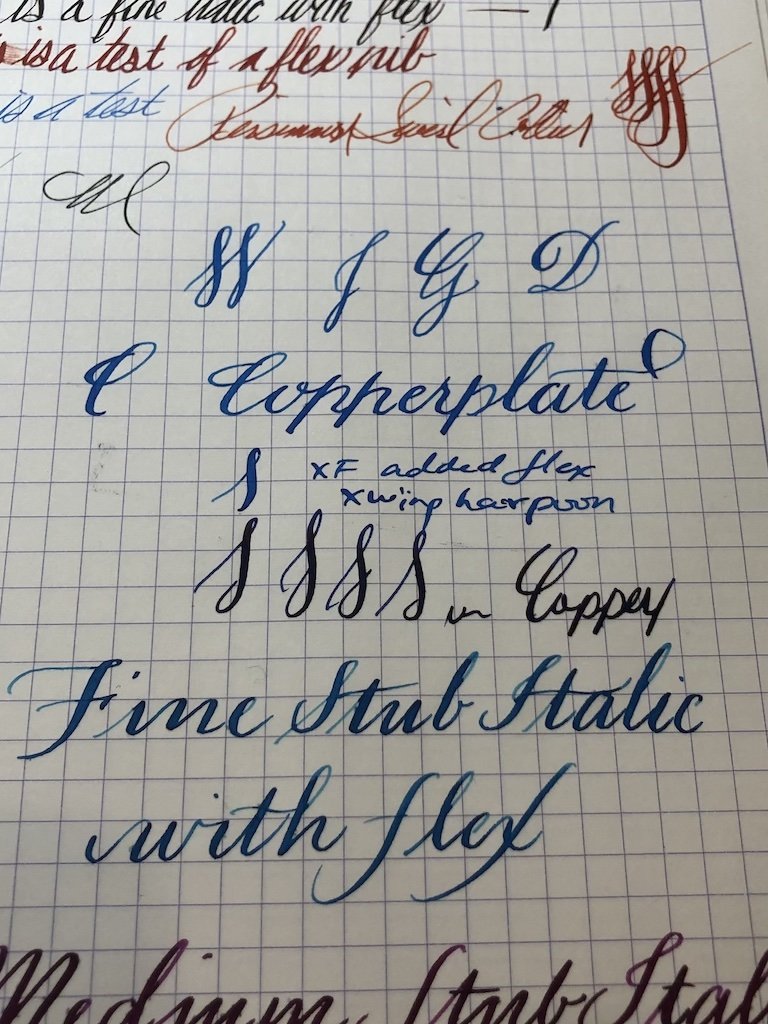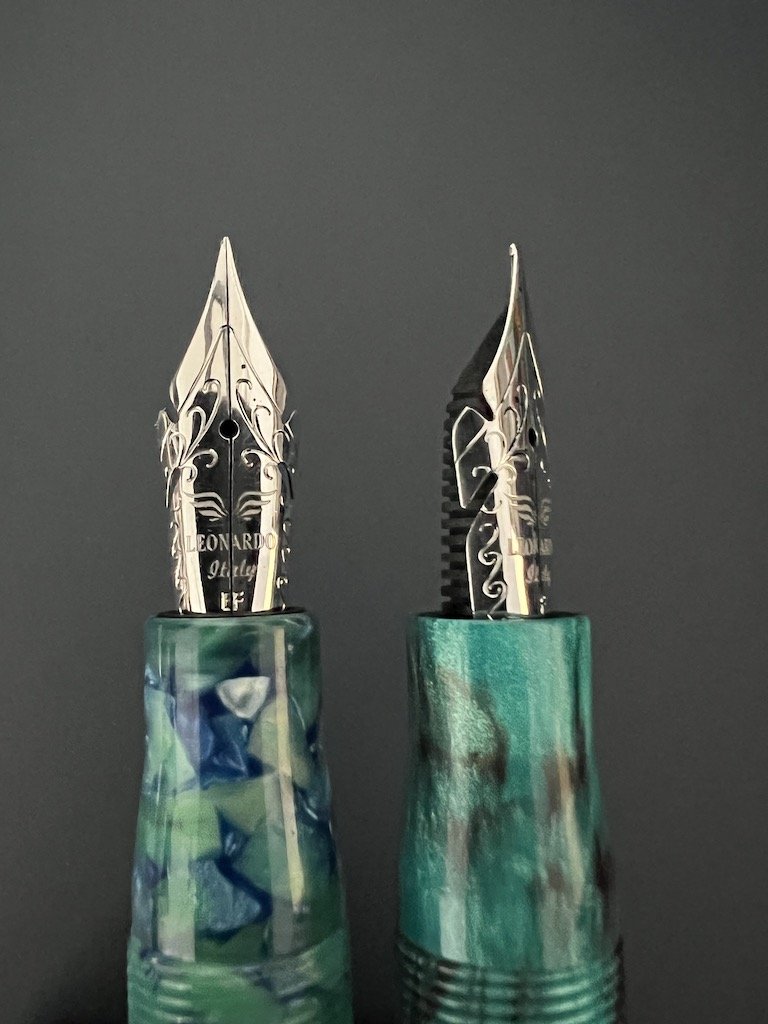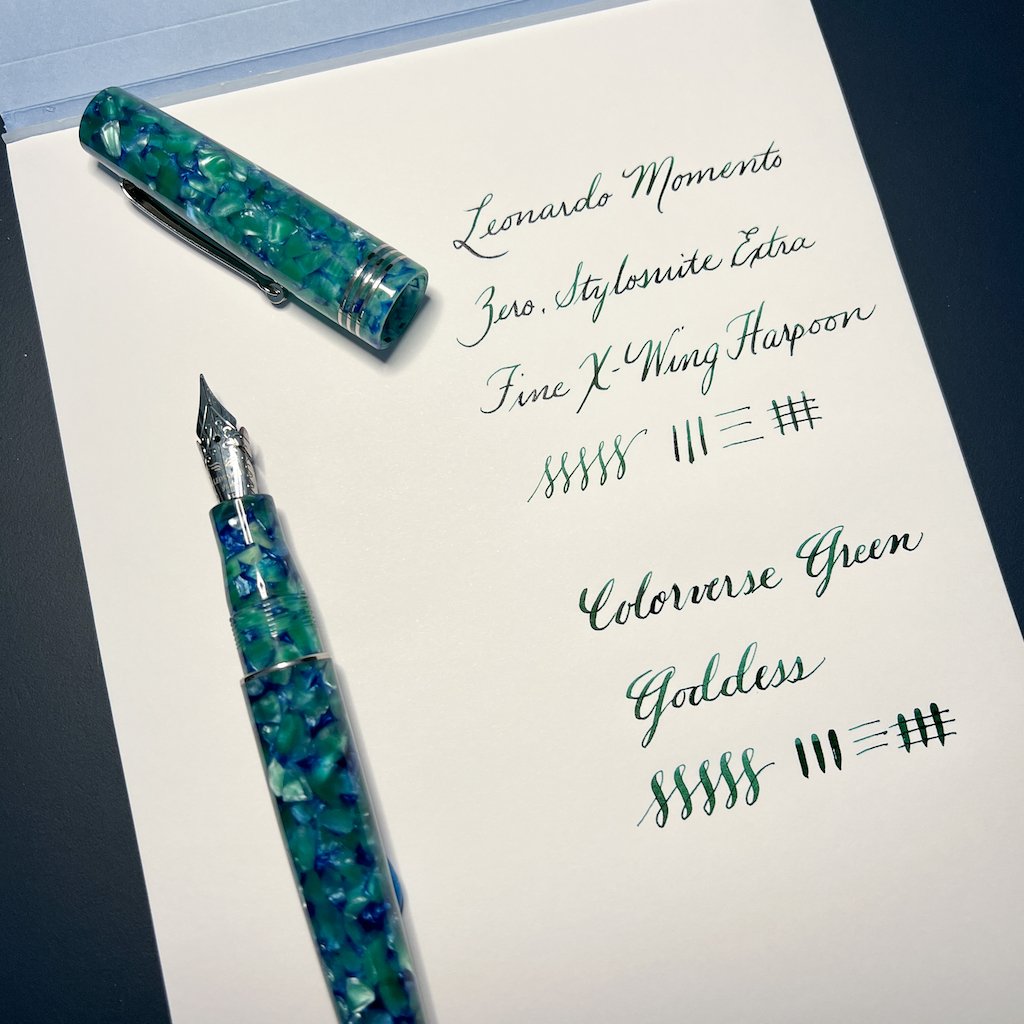(Kimberly (she/her) took the express train down the fountain pen/stationery rabbit hole and doesn't want to be rescued. She can be found on Instagram @allthehobbies because there really are many, many hobbies!.)
I was using one of my Leonardo Momento Zeros that had a flex nib from Les Sheely of Stylosuite and just inked up another, which got me channeling my inner Right Said Fred and singing “I’m Too Flexy For My Car”, except it’s NOT too flexy by far! I first met Les 4 years ago at the Chicago Pen Show (omg, the Chicago Pen Show is next week already!) but I never got around to spending much time at his table because people were always there! I finally made a point to check out his table at last fall’s Chicago Pen Show and now I know why people spend so much time there.
Les is known for his flex modifications - just check out his Stylosuite IG account to see examples of what his pens/nibs can do - but he also does italics, cursive italics and other grinds too. When you sit down at his table, Les will hand you several pens and asks you to write with them and tell him what you like or dislike about them. Is the pen too big/small? Too fine or too broad? Flexy enough? Not enough? Too sharp, scratchy or smooth? Based on those answers, he will take away certain pens and replace them with different ones for you to try, and this goes on for however long it takes the customer to figure out what they want. Les says that it’s common that a customer says they start out wanting something specific but ends up realizing it’s something totally different.
Les Sheely of Stylosuite at the 2021 DC Pen Show.
Before I go any further though, here’s a quick intro to “what is flex”. Flex is what you get when applying pressure to the tines of the nib. The separation gives a wider line than what you’d normally get when unflexed. Most nibs are not meant to be flexed but they may vary in how much “bounce” you might get when applying a little bit of pressure. Releasing that pressure allows the tines to go back together and write as normal. Apply too much pressure and your tines may never fully go back to their original position and your nib is now “sprung”. As they say, every nib is a flex nib…once. So, don’t ever press your luck too far with any nib, flex, dip or otherwise.
This is what a regular Leonardo nib looks like with no pressure (Leonardo uses Jowo 6 nibs for many of their pens.)
Same nib with almost too much pressure, and there’s still barely a gap between the tines.
Unflexed EF X-Wing Harpoon.
EF X-Wing Harpoon, flexed with a lot less pressure than I applied with the first nib. (I wrote the pen dry during this review so there is no ink between the tines.)
Alright, back to Les/Stylosuite. I knew what I wanted ahead of time and that was flex. And I wanted it in a Leonardo Momento Zero body (he also sells other brands like Opus88), after I told him which model I wanted, he proceeded to hand me several pens (I wish I took pictures of the pens I was playing with). The first one I picked out was a Fine Cursive Italic Flex, so he then pulled 3 more pens (along with the one I picked) and then asked me which of those I liked best. They all had FCI Flex nibs, but they all felt slightly different. Les likes to say it’s like children, they all have Mom and Dad’s DNA and they may look similar but they all have different personalities. One was slightly stiffer (more of a semi-flex), another one was a bit more flexy, another one was a “crispier” italic, while the other was slightly smoother. So I sat there and made figure 8s and wrote random words until I picked out which “kid” had the personality I liked the most. I also ended up liking the “Extra Fine X-Wing Harpoon” and did the same trial and error with a few other nibs until I picked what worked for me.
My scribbles from the Chicago Pen Show last year.
So after paying the bill, which I genuinely do not remember, but it was something like $350 for the Leonardo Momento Zero with the FCI flex nib. I also gave him another Leonardo and had him modify that nib to be an EF X-Wing Harpoon. He usually doesn’t offer nib-only as an option but since I was also buying a pen, he did it this time.
Leonardo Momento Zero Iride with the EF X-Wing Harpoon (Left) and Figboot on Pens LMZ with the FCI Flex.
Unlike most pen show purchases, you won’t get to walk away with a new flexy pen. Instead, you fill out a form with your address (and he includes notes about what you liked/disliked) and then you wait for 2-3 weeks. Les goes back to his workshop where he cuts and grinds your nib/ feed so that it behaves the way you want it to. He replaces the plastic feed with an ebonite one; this is important because ebonite feeds channel ink better than plastic feeds, ensuring you don’t experience railroading when flexing. He may make other feed modifications to produce the desired flow before heat setting the nib and feed into your pen. Because of this, he does not recommend pulling the nib/feed from the housing because it can cause the nib to not perform properly.
EF X-Wing Harpoon (L) and FCI Flex.
Regular plastic feed (L) vs ebonite feed.
In my experience, Leonardo’s don’t always pull ink very well with the converter attached, so I usually ink up the converter separately, then screw in the converter and saturate the feed before using it. After saturating the feed (including dipping it into the bottle of ink), the nibs wrote great. I generally use an ink that has average to slightly wet flow and I haven’t had problems with flexing either nib, even if I haven’t used the pen for several days, even up to 2 weeks later.
I just finished my first fill of the EF X-Wing Harpoon and am on my second fill of the FCI Flex (I couldn’t resist re-inking it again). I enjoy writing with both nibs but find that the FCI is a bit more versatile as I can get the line variation from the cursive italic without doing any flexing. Neither nibs were so flexy as to be uncontrollable while flexing or too bouncy when not flexing. If you write too quickly while flexing, you may experience a little bit of railroading (where there are parallel lines with no ink in the middle) near the bottom of the stroke, but I don’t usually write very fast when I’m flexing so this hasn’t been an issue for me.
Unflexed and flexed writing samples.
Comparison of the EF X-Wing Harpoon and the Fine Cursive Italic Flex.
I really like both of these nibs and plan to make a stop to see Les at the Chicago show next week to see if there’s anything else I should try. If you see him next week or at any other pen show, consider stopping at his table and check out what he has to offer; just wait until after I finish my order! :-)

